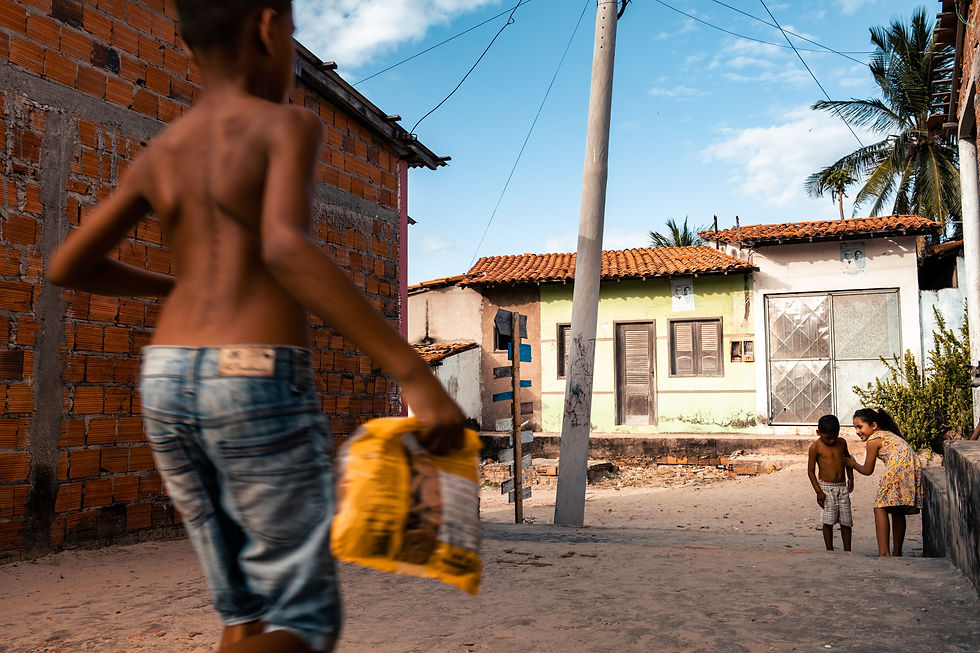Permaculture: Civil society uses sustainable agriculture for a life in harmony with nature
- Editorial Team SDG11

- Aug 6, 2022
- 4 min read
Updated: Jan 19, 2023

Permaculture is an agricultural design system that has social, political, and economic impacts. At its center are natural ecosystem principles, which attempt to properly follow natural environmental rhythms without forcing them at any time. It is also important to note that permaculture is divided into several branches, including ecological design, environmental design, ecological engineering, construction, and integrated water resource management. The latter is self-sustainable in terms of architecture and agricultural systems.
The idea of permaculture
However, in order to better understand what is permaculture and its various types, it should be noted that the term is the result of a contraction: permaculture was originally used to refer to "permanent agriculture," but was later expanded to include the concept of "permanent culture." Furthermore, scientists David Holmgren and Bill Mollison coined the term in 1978. Permaculture has been viewed as a potential solution to the current environmental and social crisis since its inception. Thus, it includes everything from sustainable agriculture to the construction of ecological and green houses, as well as a greater use of natural resources as an energy source. Finally, the surplus is redistributed through fair distribution, so that waste can be properly recycled and returned to the ecosystem.
The different varieties of permaculture include rural, which can help rural areas better conserve resources like water and fertile soils, and urban, which applies permaculture to homes and cities with the goal of reimagining these spaces to have a beneficial influence.
Fundamentals of permaculture
The three permaculture principles:
Caring for the Earth (Earth Care): Building humus, encouraging soil organisms, soil structure and fertility, preventing erosion and desiccation.
Care for People (People Care): Being mindful of self and others, nurturing human relationships, taking responsibility, finding solutions together.
Equitable Sharing (Fair Share): Loss-free, equitable harvesting and utilization through sharing with the community.
The three fundamental ethical principles of equitable distribution, care for the Earth, and care for people are the basis of permaculture. According to the first, soil protection, together with the preservation of trees and water, is what prevails. The second principle focuses on taking care of oneself and others, and it states that basic needs should be met with the help of available resources.
What exactly is permaculture?
There are also 12 basic design principles in permaculture. Observe and act, capture and store energy, obtain a return, use self-regulation and accept feedback, use and value natural resources and services, stop producing waste, plan from design to detail, integrate rather than segregate, use slow solutions, value diversity, use the edges and value the marginal, and, finally, respond appropriately to change are among them.
As a result of prior observation of nature, sustainable solutions when intervening in it can be designed. Water, biodiversity, and fertile soil are examples of clean and renewable energies that must be stored. It is also necessary to produce as much as is consumed in order to avoid waste, using self-regulating, easy-to-manage systems. To accomplish this, the details must be improved. Cooperation between the various elements is especially important. Local resources are better utilized with a slow and small system. The interfaces between air, water, and land are frequently hospitable to life.
All the advantages of permaculture at a glance:
Sustainable and resource-efficient.
Ecologically and socially compatible.
Contributes to biodiversity and encourages beneficial insects through different microclimates and diverse habitats.
Particularly resistant plant communities (high resilience).
CO2 binding in the soil through long-term humus build-up.
Water-saving and -storing.
Contributes to the (self-)supply of natural and healthy food.
Creation of knowledge and awareness of cycles and interrelationships in nature.
Layers
The idea of "layers," or the several sections into which an ecosystem is divided, is a recurrent one in the functional ecosystems of permaculture. As a result, the largest trees make up the tree canopy, while smaller trees that grow in clearings make up the understory. On the other hand, shrubs are those tiny, short, woody plants. On the other hand, the herbaceous consists of plants that dry out in the summer and reappear in the winter. The dirt cover would be immediately beneath this. Tree roots would make up the rhizosphere. Creeping plants make up the vertical layer.
Edge effect
The so-called "edge effect" is another permaculture principle that is effective. It is the result of contrasting surroundings being placed next to one another inside the same system. It is assumed that intense productivity occurs specifically where opposites collide. The coast would be one illustration. In place of the more conventional circles or ovals, it is common to design spirals in herb gardens or to imitate undulating shorelines in ponds.
Conclusions
Therefore, achieving a habitat in keeping with permaculture's principles and its varieties—where people live in harmony with different animal and plant species—is what is sought at all times. The symbiotic interactions between the individual systems must also be completely guaranteed. This interaction must also give rise to productive systems. Planning beforehand, carrying it out afterward, and ongoing maintenance are therefore essential. These are the three main stages of a permacultural design, which aims to maximize both present and future productivity.
Last but not least, the image of a flower with various blossoms is frequently used to help define what permaculture is. Concepts like "stewardship of nature and land," "building," "technology and tools," "culture and education," "health and spiritual welfare," "finance and economics," and "community government and land tenure" are all mentioned on each of them. In order to have a more peaceful and fruitful existence, we want to influence everything that needs to change within the current system in which we live, with each individual blossom – that makes a sustainable society.



